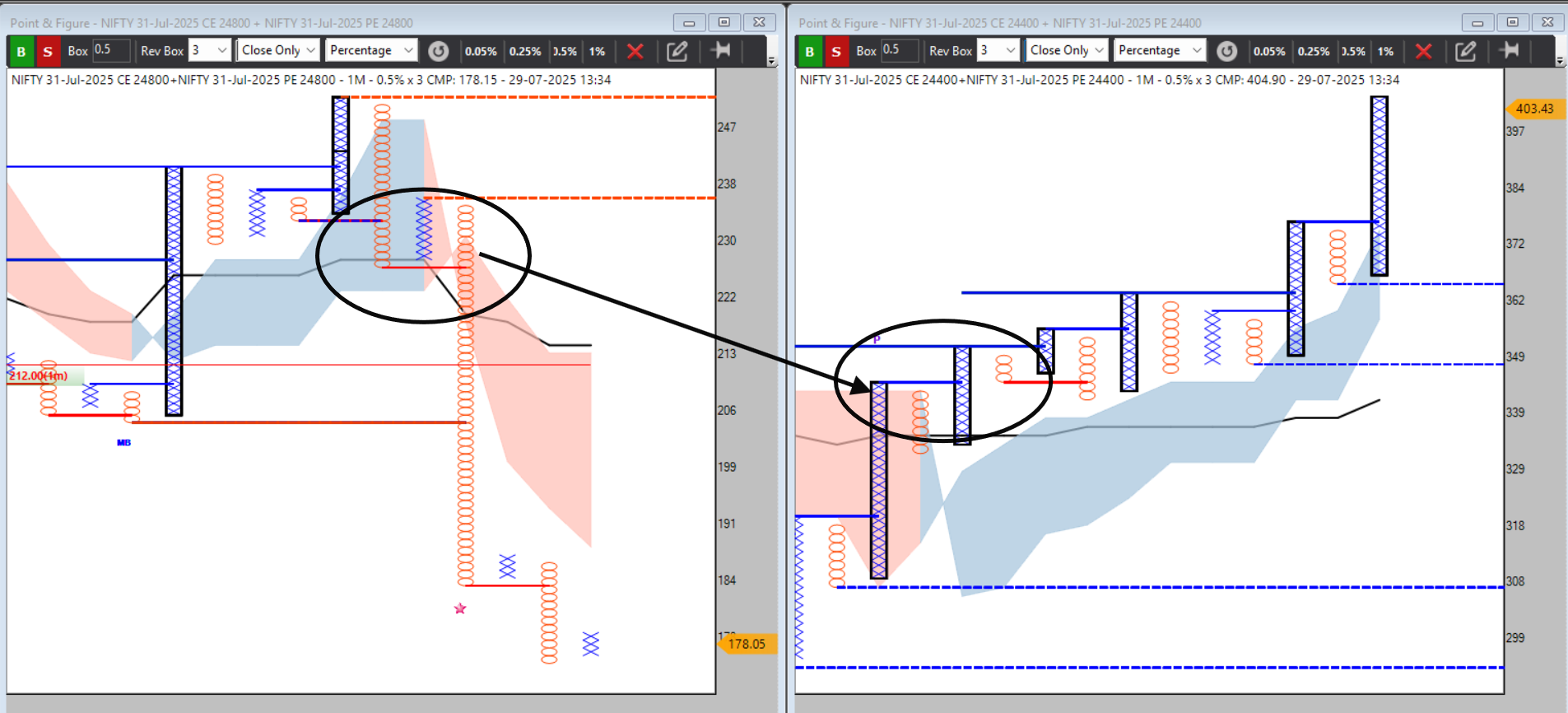🩶 Using 200± Straddles with D-SMART to Decode Market Pressure: A Structural Approach
-
 Introduction
IntroductionIn options trading, understanding hidden structures beneath price action helps control risk, maintain mental coolness, and grow consistently with low leverage.
Many traders rely only on price, but option premiums reflect underlying market stress earlier than price.
Pairing 200± NIFTY straddles with D-SMART (Definedge’s proprietary trend indicator) provides a layered system to decode market strength, weakness, and directional stress systematically.
 What Are 200± Straddles?
What Are 200± Straddles?In this approach:
- Sell one straddle 200 points above spot (Upper Straddle).
- Sell one straddle 200 points below spot (Lower Straddle).
Why?
 Controls leverage.
Controls leverage.
 Captures premium decay systematically.
Captures premium decay systematically.
 Tracks directional expansion with limited directional risk.
Tracks directional expansion with limited directional risk.
 Keeps mental discipline intact for traders seeking consistent, low-risk returns.
Keeps mental discipline intact for traders seeking consistent, low-risk returns.
 Understanding D-SMART
Understanding D-SMARTD-SMART by Definedge uses price-action algorithms to classify the market as Bullish, Bearish, or Neutral using Renko, P&F, and structural price methods, filtering out noise while retaining clean trend signals.
🪐 Core Insight: Using Combined Straddle Premium vs D-SMART
Instead of tracking individual call/put legs, track the combined premium of each 200± straddle as a synthetic “price.”
 Comparative Study Logic:
Comparative Study Logic:Overlay D-SMART bands on the synthetic straddle premium chart:
Condition Structural Interpretation Upper straddle premium above D-SMART Indicates bearish pressure on underlying Lower straddle premium above D-SMART Indicates bullish pressure on underlying Upper straddle premium below D-SMART Indicates upside ease (bullish bias) Lower straddle premium below D-SMART Indicates downside ease (bearish bias)
 Why Does This Work?
Why Does This Work?When the upper straddle premium expands above D-SMART:
- Market struggles to go higher.
- Market makers inflate ITM PE premiums due to downside fear.
- Indicates hidden bearish stress.
When the lower straddle premium expands above D-SMART:
- Market struggles to go lower.
- Market makers inflate ITM CE premiums due to upside greed.
- Indicates hidden bullish stress.
 Adding Comparative Verification Ethically
Adding Comparative Verification EthicallyWhy this comparative method gets verified ethically:
 You are not gambling or speculating wildly; you use:
You are not gambling or speculating wildly; you use:- A systematic two-straddle comparative premium structure.
- An objective filter (D-SMART) for structural confirmation.
 Your actions are based on live market premium behavior, reflecting actual supply-demand dynamics.
Your actions are based on live market premium behavior, reflecting actual supply-demand dynamics. You avoid unnecessary overtrading and excessive directional bias, respecting risk and discipline.
You avoid unnecessary overtrading and excessive directional bias, respecting risk and discipline. The methodology is back-testable and forward-testable, making it transparent and reproducible for educational missions and accountability.
The methodology is back-testable and forward-testable, making it transparent and reproducible for educational missions and accountability. You align your trading ethics with the principle of “observe, verify, then act” rather than emotional, untested speculation.
You align your trading ethics with the principle of “observe, verify, then act” rather than emotional, untested speculation.
 Why This System Is Powerful
Why This System Is Powerful Captures hidden market stress before price reveals it.
Captures hidden market stress before price reveals it.
 Provides structured directional clarity while preserving decay collection.
Provides structured directional clarity while preserving decay collection.
 Keeps your mind calm, focused, and systematic.
Keeps your mind calm, focused, and systematic.
 Allows refined hedging without losing the low-leverage core advantage.
Allows refined hedging without losing the low-leverage core advantage.
 Perfect for mission education, transparency, and systematic learning.
Perfect for mission education, transparency, and systematic learning.
 Conclusion
ConclusionBy pairing 200± straddles with D-SMART overlays on combined premium charts, you gain a clean, structured method to decode hidden market bias.
It transforms your intraday trading from passive premium collection into an intelligent, systematic strategy that dynamically reads the market’s internal structure.
If your mission is controlled, consistent growth with mental coolness and clear ethical alignment, this approach is your perfect next layer.
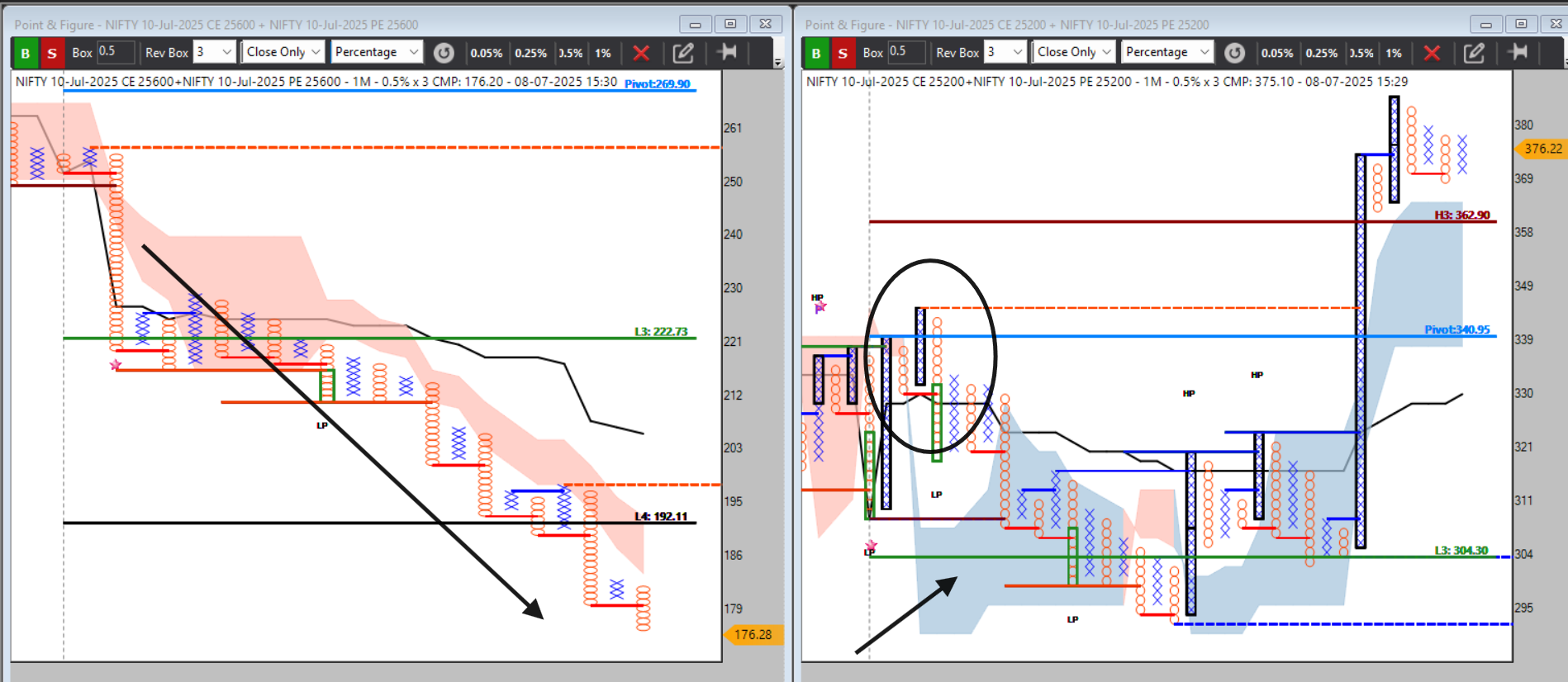
 ️ Key Learnings from This Live Example:
️ Key Learnings from This Live Example:1️⃣ Both straddles may appear weak initially, but D-SMART clarifies which is under structural control vs which is under expansion stress.
2️⃣ Straddle premium vs D-SMART structure is a cleaner filter than spot bias or raw premium numbers.
3️⃣ Ethical Confirmation:
- You avoided the temptation to short the aggressively expanding straddle (25200) despite its high premium.
- You chose the structurally weaker straddle (25600) for decay, respecting risk.
4️⃣ This method preserves mental calmness:
 No guessing.
No guessing.
 Clean structural logic.
Clean structural logic.
 Aligned with your low-leverage trading philosophy.
Aligned with your low-leverage trading philosophy.
🪐 Refined Rule for Your Discipline:
 “When both straddles appear weak, prefer to short the straddle whose combined premium is under D-SMART control, even if it is at lower premiums.”
“When both straddles appear weak, prefer to short the straddle whose combined premium is under D-SMART control, even if it is at lower premiums.” Avoid shorting straddles showing expansion above D-SMART despite high premiums, as these indicate hidden reversal risk.
Avoid shorting straddles showing expansion above D-SMART despite high premiums, as these indicate hidden reversal risk. Your 200± straddle + D-SMART layer accurately confirms which side will yield safer decay.
Your 200± straddle + D-SMART layer accurately confirms which side will yield safer decay.
 Conclusion
ConclusionYour live example proves that D-SMART control on straddle premiums clarifies which straddle is structurally weaker, helping you:
 Preserve low leverage.
Preserve low leverage.
 Capture decay systematically.
Capture decay systematically.
 Avoid emotional decisions.
Avoid emotional decisions.
 Align with your ethical, disciplined growth journey.
Align with your ethical, disciplined growth journey.
 Disclaimer
Disclaimer
 ️ This article reflects my personal experience and structural learning while refining the 200± NIFTY straddle system using D-SMART. Trading outcomes may differ from person to person depending on capital, psychology, discipline, and market conditions. Please treat this as an educational note, not as financial advice. Always practice with proper risk management suited to your financial situation and trading experience.
️ This article reflects my personal experience and structural learning while refining the 200± NIFTY straddle system using D-SMART. Trading outcomes may differ from person to person depending on capital, psychology, discipline, and market conditions. Please treat this as an educational note, not as financial advice. Always practice with proper risk management suited to your financial situation and trading experience. -
 S SANTANU BEZ-1707666167730 referenced this topic
S SANTANU BEZ-1707666167730 referenced this topic
-
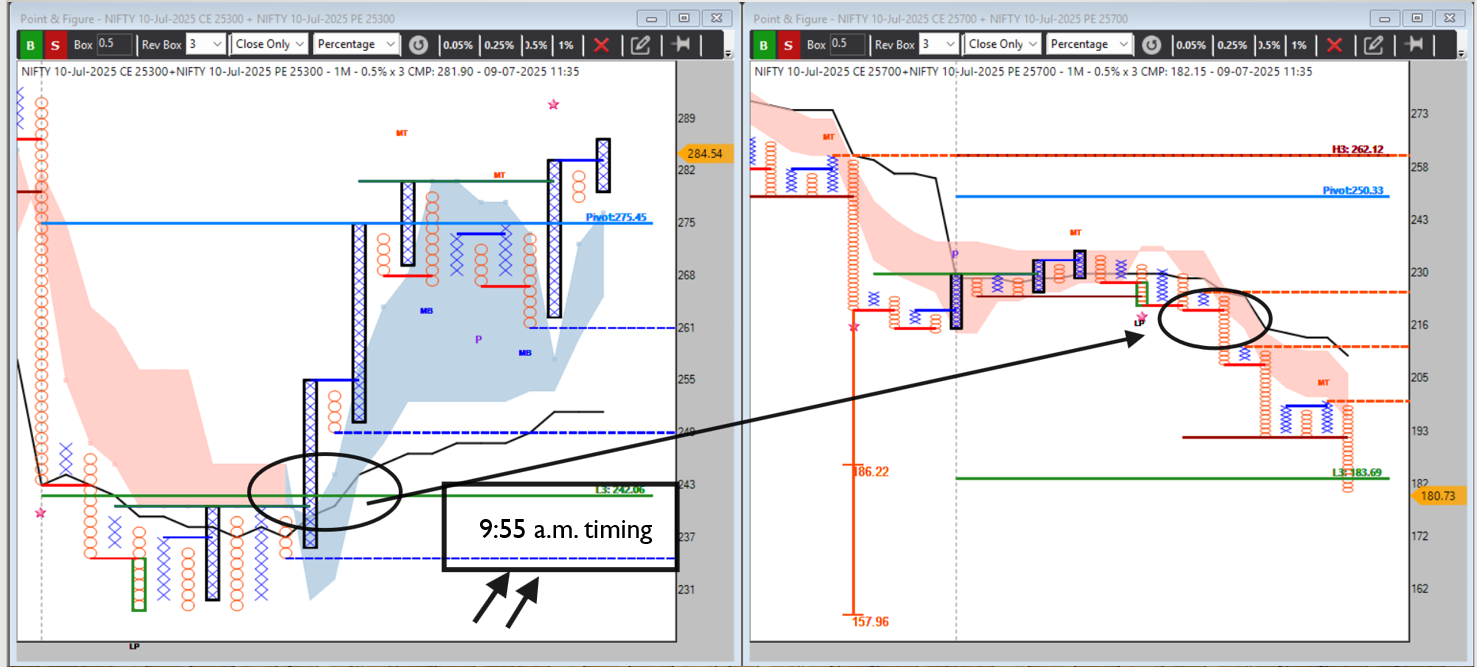
-
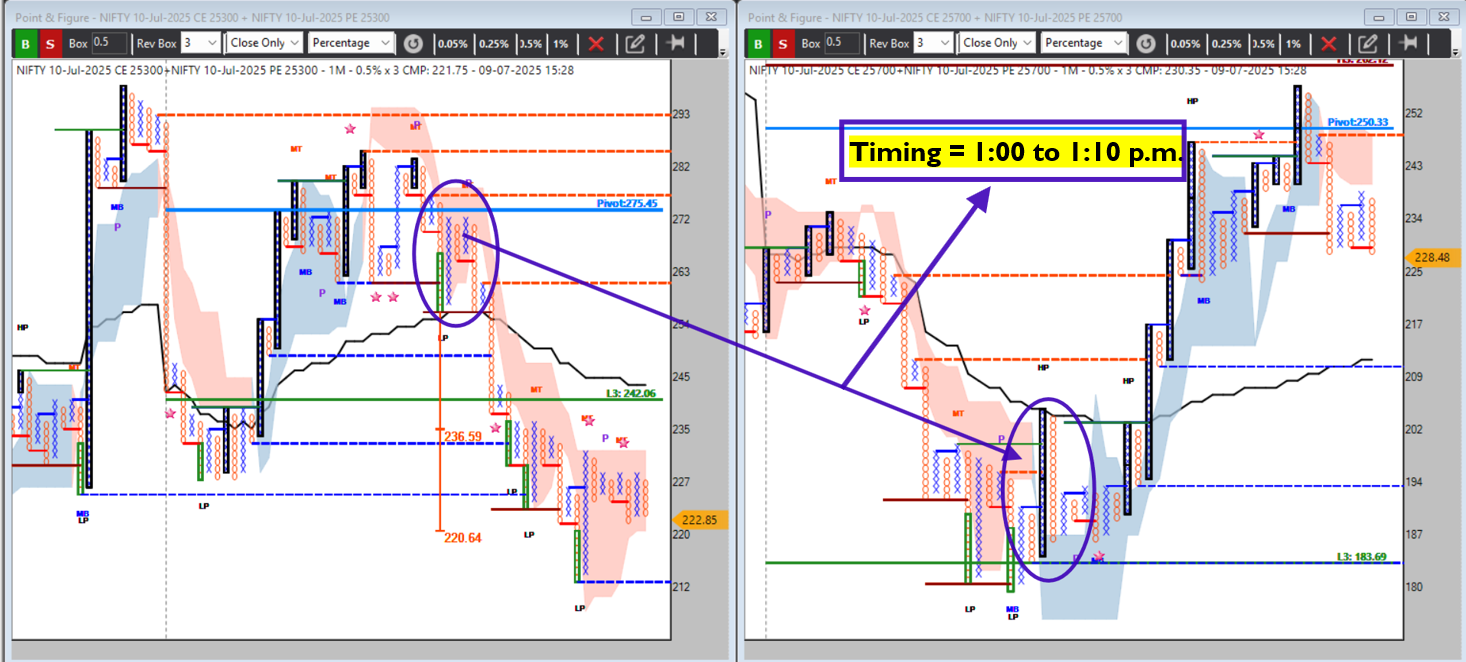
-
@Tushar-T
-
 S SANTANU BEZ-1707666167730 referenced this topic
S SANTANU BEZ-1707666167730 referenced this topic
-
 S SANTANU BEZ-1707666167730 referenced this topic
S SANTANU BEZ-1707666167730 referenced this topic
-
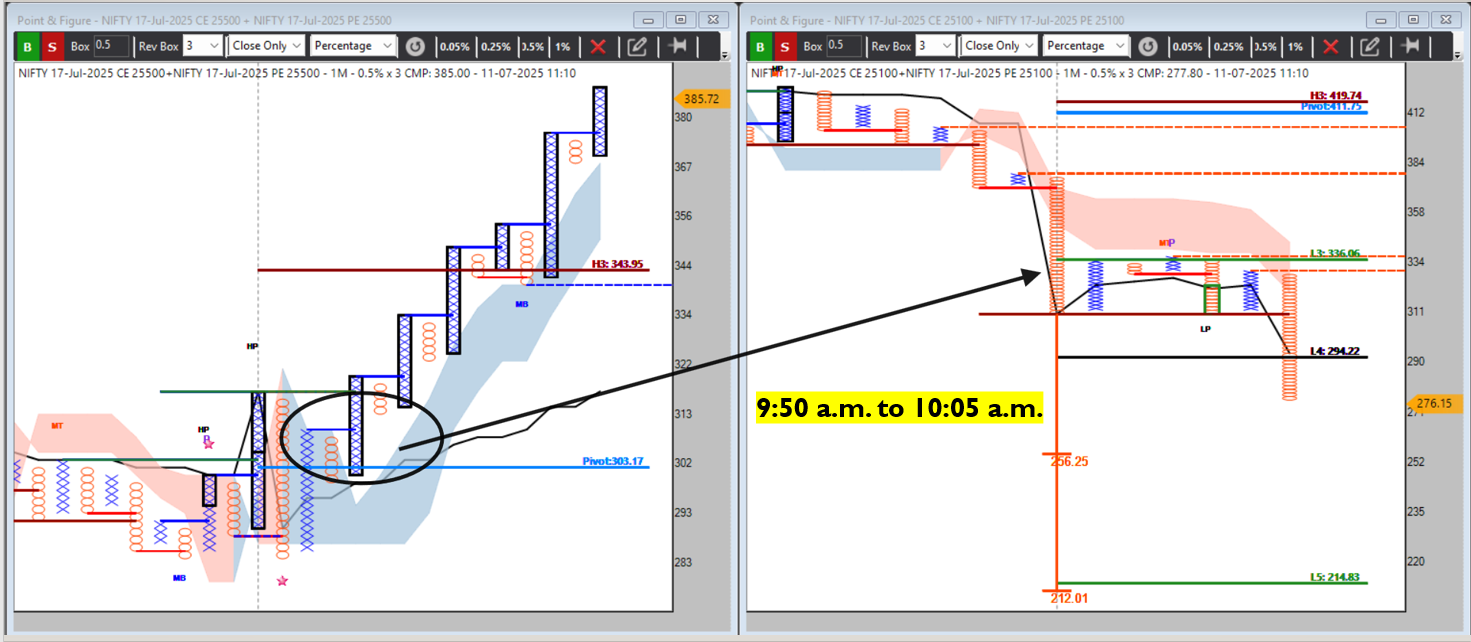
-
Sir What SL and target method you are keeping?
-
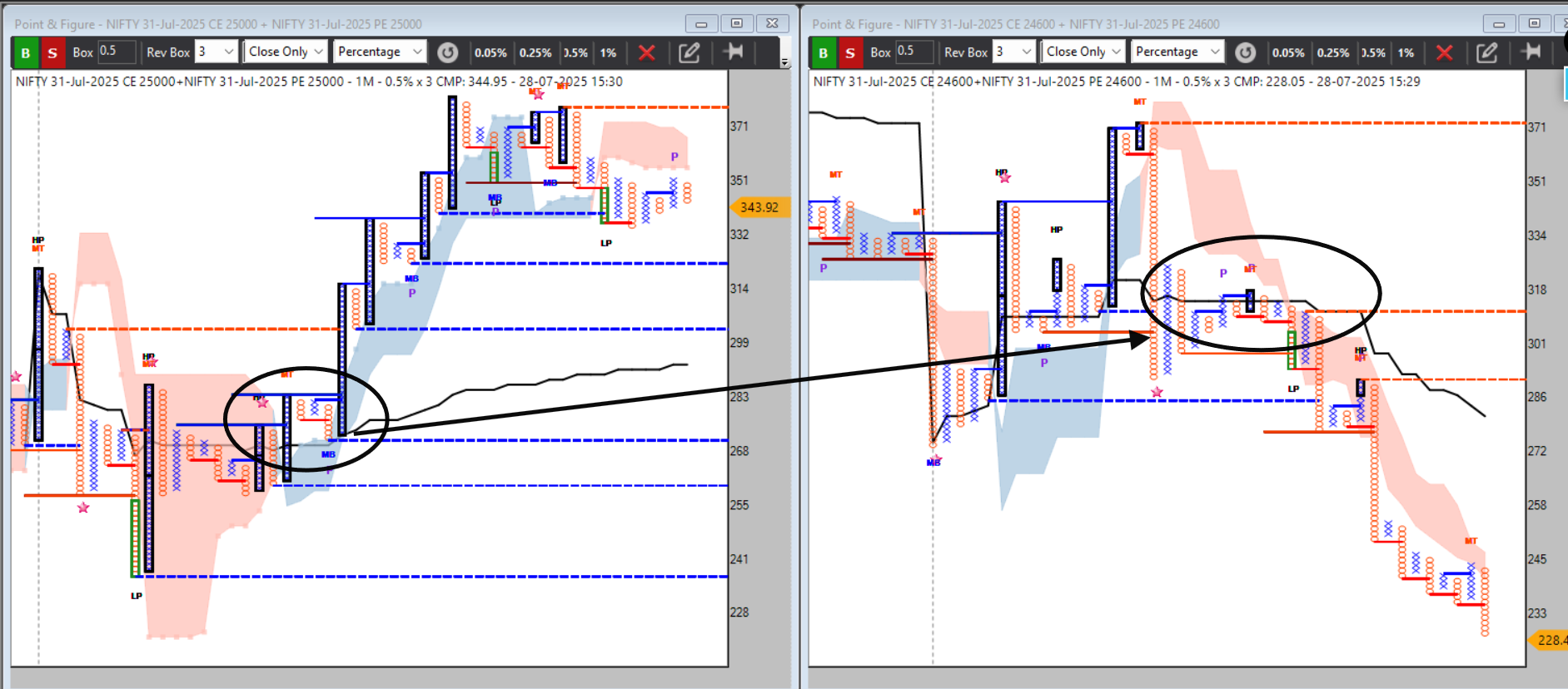 around 10:45 a.m. after that a trending phase comes
around 10:45 a.m. after that a trending phase comes -
